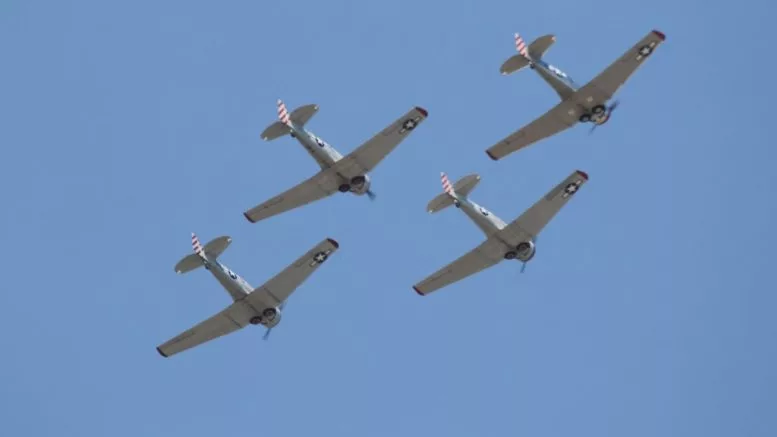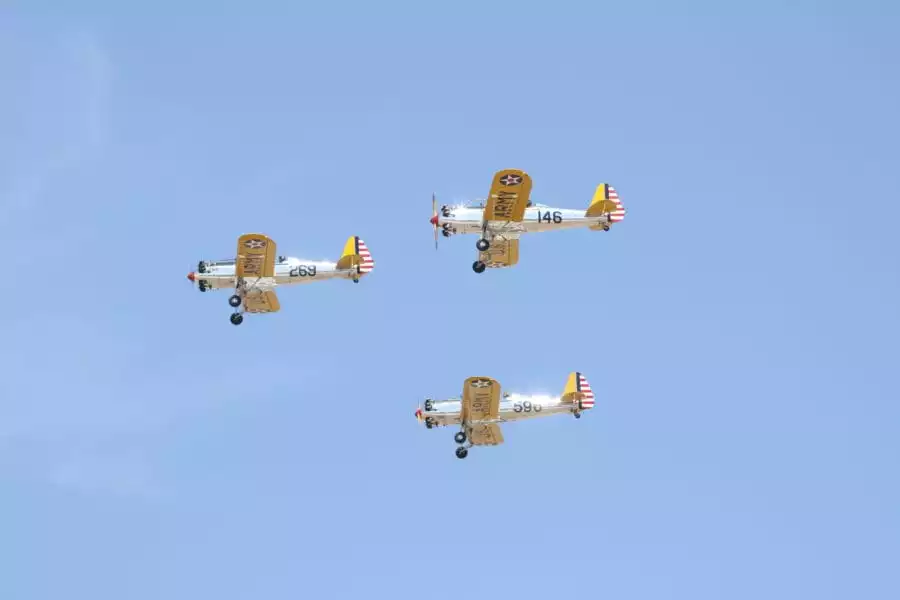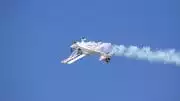The Genius Design of Airplane Wings
Airplane wings are obviously a necessity for flight, but what type of wings are common, and how has the design shifted throughout the years?
Had the Wright Brothers still been around today, they undoubtedly would have been amazed by the huge number of different airplane wings flying around! Short, long, pointy, stubby, and some downright weird, there is plenty to see! Today we will talk about the genius design of airplane wings, tell you a little bit about how they work, and show you some different designs that you might see at air shows.
How Do Airplane Wings Actually Work?
There’s quite a lot of clever design and science behind aircraft wings.
Without getting too technical, all airplane wings work by causing air passing above and below the wing to travel at different speeds.
When air is made to travel at different speeds, it creates differences in pressure on the wing’s upper and lower sides. This differential goes by an alternative name that is crucial to flight.
It’s called lift.
The amount of lift generated and where on the wing it is produced depends entirely on the shape of the wing. Different airplane wings create different lift profiles, which can give specific benefits suited to each type of aircraft.
The Genius Design of Airplane Wings: 9 Types of Wings You Might See
1. Straight Rectangular Wings
Straight airplane wings are the simplest type for manufacturers to construct. They also produce lift equally along the entire wing surface.
The wings are great as they don’t stall easily, making them ideal for training aircraft such as the Cessna 150.
You’ll also see straight wings on biplanes and stunt aircraft.
2. Tapered Wings
Tapered wings are considered an upgraded version of the straight wing. They make an airplane more maneuverable and allow it to fly faster as less drag is produced.
Why is maneuverability a good thing?
In early fighters, such as the P-51 Mustang, this was a great advantage in combat!
3. Elliptical Wings
You don’t see that many elliptical wings around.
Why?
Because, while they are some of the most efficient wings out there, they are very complex to engineer and produce on a mass scale.
Perhaps the most iconic elliptical wing you’ll see is on the Supermarine Spitfire, the British Royal Airforce’s iconic World War 2 fighter. The wing shape allows the aircraft to be highly maneuverable, with less drag.
If you haven’t seen a Spitfire before, there are still a few around. You can view one up close as a static display at the Wings Over Camarillo Airshow.
4. Delta Wings
The bigger the surface area, the greater the lift produced. Just what you need for things like heavy bombers. A delta wing also allows aircraft to perform well at both low and high speeds.
You might not be aware, but aircraft nearly always store their fuel in the wing. More surface area, more fuel.
You can see great examples of how this has been put to practical use in aircraft such as the Vulcan Bomber.
5. Trapezoidal Wings
Want all the benefits of a delta wing, but with even more surface area? Why not combine two delta wings and place them back to back?
Trapezoidal wings taper at the front and trailing edge. You’ll see them used in many modern fighter aircraft.
Such as?
The US Air Forces very own F22A Raptor!
The best bit?
90 Degree angles reflect radar. Combat aircraft manufacturers can make them less visible to enemy radar by creating an aircraft with trapezoidal wings!
6. Foldable Wings
Ever wished you had more space?
Try living on an aircraft carrier!
Wings do tend to take up a lot of room, so clever designers came up with a way to make aircraft easier to store.
Which aircraft?
The Grumman Hellcat and Vought Corsair! These were both iconic World War Two Fighter aircraft that were highly maneuverable yet easy to store!
7. Swept Back Wings
You’ll most certainly have seen examples of swept-back wings flying overhead at some point.
Practically all commercial jet airliners use them!
When aircraft fly at altitude and at high speeds, these wings maximize lift and minimize drag. They aren’t the best at slower speeds, however.
Aside from commercial airliners, you can see wings that are both straight and swept back on much smaller aircraft. Pitts Specials are aerobatic aircraft that go really fast to take maximum advantage.
8. Forward-Swept Wings
A wing, backward?
You bet!
These aircraft are super rare and tend only to be used in military applications. They have fallen out of favor as, while they allow for superb maneuverability, the wings create control issues for aircraft designers (and pilots).
You can see examples of this wing on airplanes, such as the Soviet Sukhoi SU-47.
9. Rotary Wings?
Have you ever seen an aircraft with a wing that rotates?
We are sure you have!
One word. Helicopters.
Helicopters actually generate lift using a rotary-wing. Each of a helicopter’s blades is actually a long thin wing! By changing the pitch of each blade at a certain point, the helicopter can be made to fly forwards, backward, and even hover in place!
Rotary winged aircraft are some of the most dynamic in the world! And because there are multiple wings producing lots of lift, they can carry really heavy weights.
Want to see this principle in action?
The wings over Camarillo air show features a live water drop from the Ventura Sherriff Sikorsky HH-60!
Final Thought
You’ll be able to see the vast majority of the above wing types at the Wings Over Camarillo Air Show. Whether you want to see the folded wings of the Hellcat, the elliptical wing of the spitfire, or some straight wings cutting and tumbling through the air, there will be something for everyone.
Many of our aircraft are available to view up close and personal on the ground, as well as in the air. As a result, you can get a detailed view of the genius design of airplane wings. Why not check to see our schedule and when our next air show event is planned.
Ready to Soar with Us?





